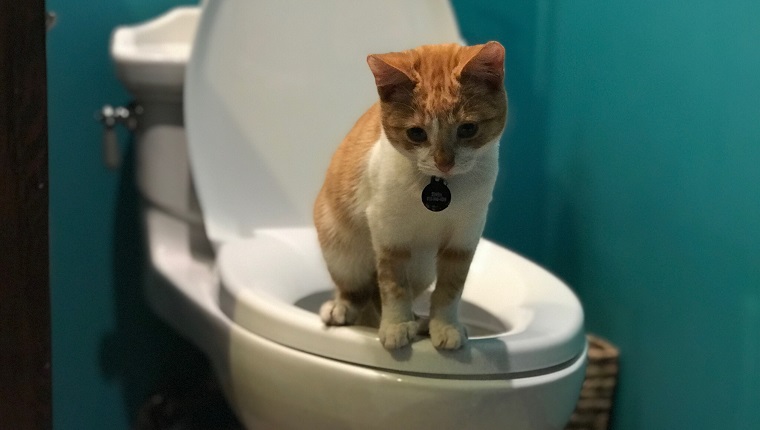Why Flushing Cat Poop Down Your Toilet Is Bad - Tips for Correct Handling
Why Flushing Cat Poop Down Your Toilet Is Bad - Tips for Correct Handling
Blog Article
They are making several great points relating to Don’t flush cat feces down the toilet as a whole in this content in the next paragraphs.

Introduction
As pet cat owners, it's vital to be mindful of how we dispose of our feline good friends' waste. While it may appear convenient to purge cat poop down the bathroom, this technique can have damaging effects for both the atmosphere and human wellness.
Ecological Impact
Flushing pet cat poop introduces dangerous pathogens and parasites right into the water supply, presenting a significant danger to marine environments. These contaminants can negatively influence marine life and compromise water high quality.
Wellness Risks
In addition to environmental problems, flushing cat waste can additionally position health and wellness threats to humans. Feline feces might have Toxoplasma gondii, a parasite that can trigger toxoplasmosis-- a possibly extreme illness, especially for expectant women and individuals with weakened body immune systems.
Alternatives to Flushing
The good news is, there are safer and much more accountable methods to take care of cat poop. Consider the adhering to choices:
1. Scoop and Dispose in Trash
The most common method of getting rid of feline poop is to scoop it right into an eco-friendly bag and toss it in the garbage. Make certain to use a dedicated trash inside story and throw away the waste without delay.
2. Usage Biodegradable Litter
Go with biodegradable cat trash made from materials such as corn or wheat. These trashes are eco-friendly and can be securely disposed of in the trash.
3. Hide in the Yard
If you have a backyard, take into consideration hiding feline waste in an assigned area away from vegetable yards and water sources. Make certain to dig deep adequate to avoid contamination of groundwater.
4. Install a Pet Waste Disposal System
Invest in a pet garbage disposal system specifically made for pet cat waste. These systems utilize enzymes to break down the waste, minimizing smell and environmental impact.
Conclusion
Liable animal ownership expands past supplying food and shelter-- it also involves proper waste management. By avoiding flushing feline poop down the toilet and opting for alternative disposal methods, we can decrease our environmental impact and safeguard human wellness.
Why Can’t I Flush Cat Poop?
It Spreads a Parasite
Cats are frequently infected with a parasite called toxoplasma gondii. The parasite causes an infection called toxoplasmosis. It is usually harmless to cats. The parasite only uses cat poop as a host for its eggs. Otherwise, the cat’s immune system usually keeps the infection at low enough levels to maintain its own health. But it does not stop the develop of eggs. These eggs are tiny and surprisingly tough. They may survive for a year before they begin to grow. But that’s the problem.
Our wastewater system is not designed to deal with toxoplasmosis eggs. Instead, most eggs will flush from your toilet into sewers and wastewater management plants. After the sewage is treated for many other harmful things in it, it is typically released into local rivers, lakes, or oceans. Here, the toxoplasmosis eggs can find new hosts, including starfish, crabs, otters, and many other wildlife. For many, this is a significant risk to their health. Toxoplasmosis can also end up infecting water sources that are important for agriculture, which means our deer, pigs, and sheep can get infected too.
Is There Risk to Humans?
There can be a risk to human life from flushing cat poop down the toilet. If you do so, the parasites from your cat’s poop can end up in shellfish, game animals, or livestock. If this meat is then served raw or undercooked, the people who eat it can get sick.
In fact, according to the CDC, 40 million people in the United States are infected with toxoplasma gondii. They get it from exposure to infected seafood, or from some kind of cat poop contamination, like drinking from a stream that is contaminated or touching anything that has come into contact with cat poop. That includes just cleaning a cat litter box.
Most people who get infected with these parasites will not develop any symptoms. However, for pregnant women or for those with compromised immune systems, the parasite can cause severe health problems.
How to Handle Cat Poop
The best way to handle cat poop is actually to clean the box more often. The eggs that the parasite sheds will not become active until one to five days after the cat poops. That means that if you clean daily, you’re much less likely to come into direct contact with infectious eggs.
That said, always dispose of cat poop in the garbage and not down the toilet. Wash your hands before and after you clean the litter box, and bring the bag of poop right outside to your garbage bins.
https://trenchlesssolutionsusa.com/why-cant-i-flush-cat-poop/

As an enthusiastic person who reads on Can You Flush Cat Poop Down The Toilet?, I imagined sharing that information was sensible. Loved our content? Please share it. Let another person discover it. We thank you for reading our article about Can You Flush Cat Poop Down The Toilet?.
Request Service Report this page